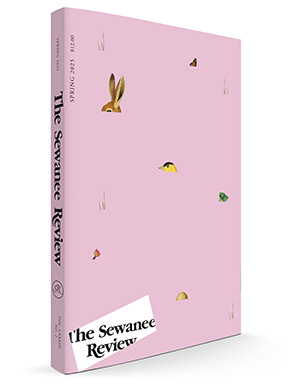"We Publish the Writers of Right Now." A Chat with Adam Ross & Eric Smith, Editors of The Sewanee Review
"A culture machine."
Howdy! I come with a brand-new editor interview, freshly in the books!
Today I had the pleasure of speaking with Adam Ross and Eric Smith, Editors of The Sewanee Review.
Founded in 1892 by the teacher and critic William Peterfield Trent, the Sewanee Review is America’s oldest continuously published literary quarterly. Many of the twentieth century’s great writers, including T. S. Eliot, William Faulkner, Eudora Welty, Wallace Stevens, Saul Bellow, Katherine Anne Porter, Marianne Moore, and Ezra Pound, have appeared in the magazine. SR also has a long tradition of cultivating emerging talent: we published excerpts of Cormac McCarthy and Flannery O’Connor’s first novels, and the early poetry of Robert Penn Warren, Sylvia Plath, Robert Lowell, and Christian Wiman. “Whatever the new literature turns out to be,” wrote editor Allen Tate in 1944, “it will be the privilege of the Sewanee Review to print its share of it, to comment on it, and to try to understand it.” The mission remains unchanged.
Adam took over as Editor in 2016. At that time the magazine was in need of a reboot, and he was “brought on to modernize it.” He did so by developing the magazine’s website in order to publish online content, incorporating “design dynamism,” adding a blog and a podcast, creating social platforms for the site and more.
Eric was brought on as Poetry and Managing Editor in 2018. In terms of how the editors see the journal’s current mission, Adam stated the magazine aims to “publish the writers of right now,” the “writers at the tip of the spear.” “If you want to know where the trends are heading in the culture,” he said, “throw open the pages of a literary magazine.”
As this was part of our Lit Mag Reading Club, we discussed several works and overall themes within the Spring 2025 issue. I noticed that most of the short stories, two of which were contest winners selected by Lorrie Moore, dealt with protagonists in their late 20s. When these editors say they seek writers at the tip of the spear, I wondered, did that mean their contributors tended to skew young?
Both editors said that was not the case. The magazine is meant to represent the “polyphonic voices” of contemporary literature. Very often themes and commonalities emerge accidentally through the process of selecting work. Eric calls such coincidences, which are typically noticed after pieces have already been chosen, “the spooky action.”
Putting an issue together usually takes 7-8 months. In spite of the big names at this magazine, its awards and long-standing prestige, all work that comes through regular submissions is given a fair read. The editors work with graduates of Sewanee University to discuss pieces and make final decisions. These editors also work closely with writers on revisions, often going through many drafts before publication.
So, what do these editors look for specifically? Adam named three criteria for selecting pieces: “stickiness,” “authority,” and “does it bring news?” Stickiness refers to the question of whether the story stays with the reader, as well as whether it has “integrity,” if it holds together. Authority addresses the question, “Does the writer have total command of the world she’s writing about?” And the question of whether the work brings news asks whether the piece offers something fresh, “newly mints the experience.”
What else is meant by these terms? Are there other criteria which will determine if a work is accepted here? How important is the cover letter and a writer’s previous publication credits? What else should submitting writers know before sending work to this magazine?
For all that and more, dear friends, you will have to tune in!
Sewanee Review receives roughly 8,000 submissions per year. General submissions are currently closed, but will reopen within the year.
To everyone who came out today, thank you for showing up! Your faces are the cool icy lemonade on my sweltering summer-in-the-city day.
And, of course, thank you to Adam and Eric for taking the time to take us behind the scenes of another lovely little magazine.
Happy viewing!
This video is for members of our Lit Mag Reading Club. Anyone can join the club any time by becoming a paying subscriber to Lit Mag News. Your financial support allows me to do this work, and is always appreciated!




